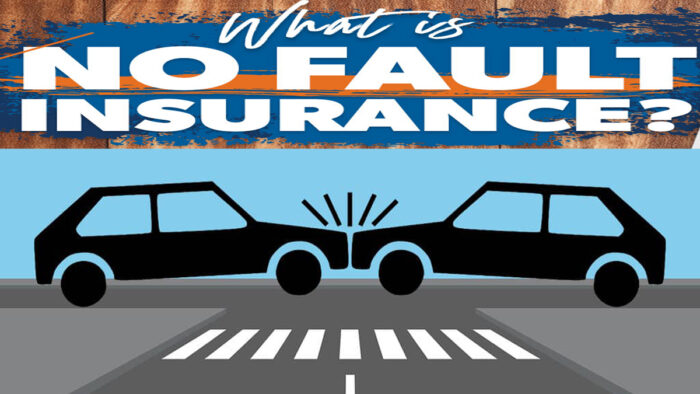No-fault insurance, also known as personal injury protection (PIP), is a type of coverage designed not to consider who caused the accident when paying for medical expenses. The policyholder’s insurance company reimburses the policyholder and their passenger without proof of fault.

No-fault insurance limits may differ in each state. Depending on the insurer and the state you reside in, it might also include compensation for lost wages, burial and funeral expenses, and more.
However, it’s important to note that no-fault insurance does not cover vehicle theft or vandalism, nor does it pay for damages to your automobile or other people’s personal property in the event of a collision. On the other hand, it restricts your ability to sue for damages in most situations.
Personal injury protection, or no-fault coverage, is mandatory in approximately a dozen states and optional in several others. The minimum coverage requirements vary by state, ranging from less than $5,000 to up to $50,000, and you may have the option to increase the coverage limit based on your needs.
How Does No-Fault Insurance Work?
In the event of a car accident where you and the other driver sustain minor injuries, no-fault insurance comes into play. If you reside in a state where no-fault insurance is mandatory, you would file a claim with your own insurer to receive compensation for your medical costs. The other driver would follow the same process with their insurance company, regardless of who caused the collision. No-fault insurance eliminates the need to file a claim against the other driver’s insurance.
The minimum coverage amounts for personal injury protection (PIP) differ from state to state, even in no-fault states. For instance, in Kansas, one of the 12 no-fault states, the minimum coverage required is $4,500. In contrast, Michigan, another no-fault state, mandates a minimum coverage of $50,000.
If you or your passengers suffer severe injuries in a crash and wish to sue the other driver for damages, specific criteria must be met. This varies among states and can involve reaching a certain dollar limit for medical expenses (monetary threshold) or meeting a specific severity level, such as being disabled, disfigured, or killed (verbal threshold). Hawaii, Kansas, Kentucky, Massachusetts, Minnesota, North Dakota, and Utah employ a monetary threshold, while the other five no-fault states use a verbal threshold, as reported by the Insurance Information Institute (III).
What Does No-Fault Insurance Cover?
The specifics of coverage can vary between insurers and policies, but typical components of no-fault insurance coverage may encompass:
- Medical bills: Covering expenses related to hospitals, doctors, and other medical services for individuals injured in the vehicle.
- Housekeeping services: Reimbursement for hiring assistance with domestic tasks you are unable to perform due to injury.
- Lost wages: Compensation for a portion of your salary or a fixed amount if you are unable to work.
- End-of-life expenses: Coverage for cremation, funeral, or burial costs may be included.
While no-fault car insurance primarily focuses on medical and injury-related expenses, it extends beyond driving incidents. In many cases, no-fault insurance coverage also applies to medical payments resulting from accidents while biking or walking, for example.
What It Doesn’t Cover?
No-fault insurance is specific in its coverage scope, primarily addressing medical and injury-related costs for you and your passengers. Generally, personal injury protection coverage does not extend to:
- Property damage
- Intentional or criminal acts
- Medical expenses of other parties
No-fault insurance provides essential coverage for medical and injury-related expenses for you and your passengers, offering financial protection in various scenarios.
Is No-Fault Insurance Required?
In contrast to liability insurance, which is compulsory in all states except Virginia and New Hampshire, only a select few states require no-fault insurance or personal injury protection (PIP), as reported by the Insurance Information Institute (III). The minimum coverage amount per person varies across states (with higher limits available), as shown below:
- Florida: $10,000
- Hawaii: $10,000
- Kansas: $4,500
- Kentucky: $10,000
- Massachusetts: $8,000
- Minnesota: $40,000
- Michigan: $50,000
- New Jersey: $15,000
- New York: $50,000
- North Dakota: $30,000
- Pennsylvania: $5,000
- Utah: $3,000
In three of these states (Kentucky, New Jersey, and Pennsylvania), drivers have the choice between purchasing no-fault insurance or traditional car insurance, which does not restrict your right to sue or be sued in court for damages related to a collision.
What is the Cost of No-Fault Insurance?
The price of a no-fault auto insurance policy is influenced by several factors, such as your location, driving history, age and gender, preferred coverage levels, and deductible amounts.
Due to the numerous variables involved, the most effective way to determine the cost of no-fault insurance is to request quotes from your current insurer and at least two or three other companies. This approach allows you to compare prices and coverage options to make an informed decision.
How Do I Purchase No-Fault Insurance?
If you reside in a state where personal injury protection is mandatory or optional, there are a few factors to consider before buying personal injury protection to ensure you obtain the best coverage at the most affordable price.
• Determine the amount of coverage needed
Each no-fault state has its own minimum coverage requirements, as outlined in the list of no-fault states. However, these requirements only represent the minimum amount of coverage. Depending on your health insurance coverage, if any, and the state’s minimum requirement, you may want to consider purchasing additional coverage if you can afford it.
• Understand the coverage
Personal injury protection is not a one-size-fits-all solution for car insurance. It primarily covers medical expenses for the parties in your vehicle.
Most states require a minimum amount of liability car insurance to pay for damages to other people’s property (such as their vehicle) and medical bills. Collision insurance, which is optional, covers repairs to your own vehicle.
• Consider the deductible
When calculating the cost of no-fault car insurance, remember to factor in the deductible. It is the amount you must pay out of pocket before your vehicle insurance covers the remaining costs. A typical deductible amount is $500 or $1,000, but the amount varies by state.
• Shop Around
As with any type of car insurance, obtaining multiple quotes is worth the effort. The same coverage could be significantly cheaper with one carrier compared to another, making it essential to compare prices and coverage options to make an informed decision.



